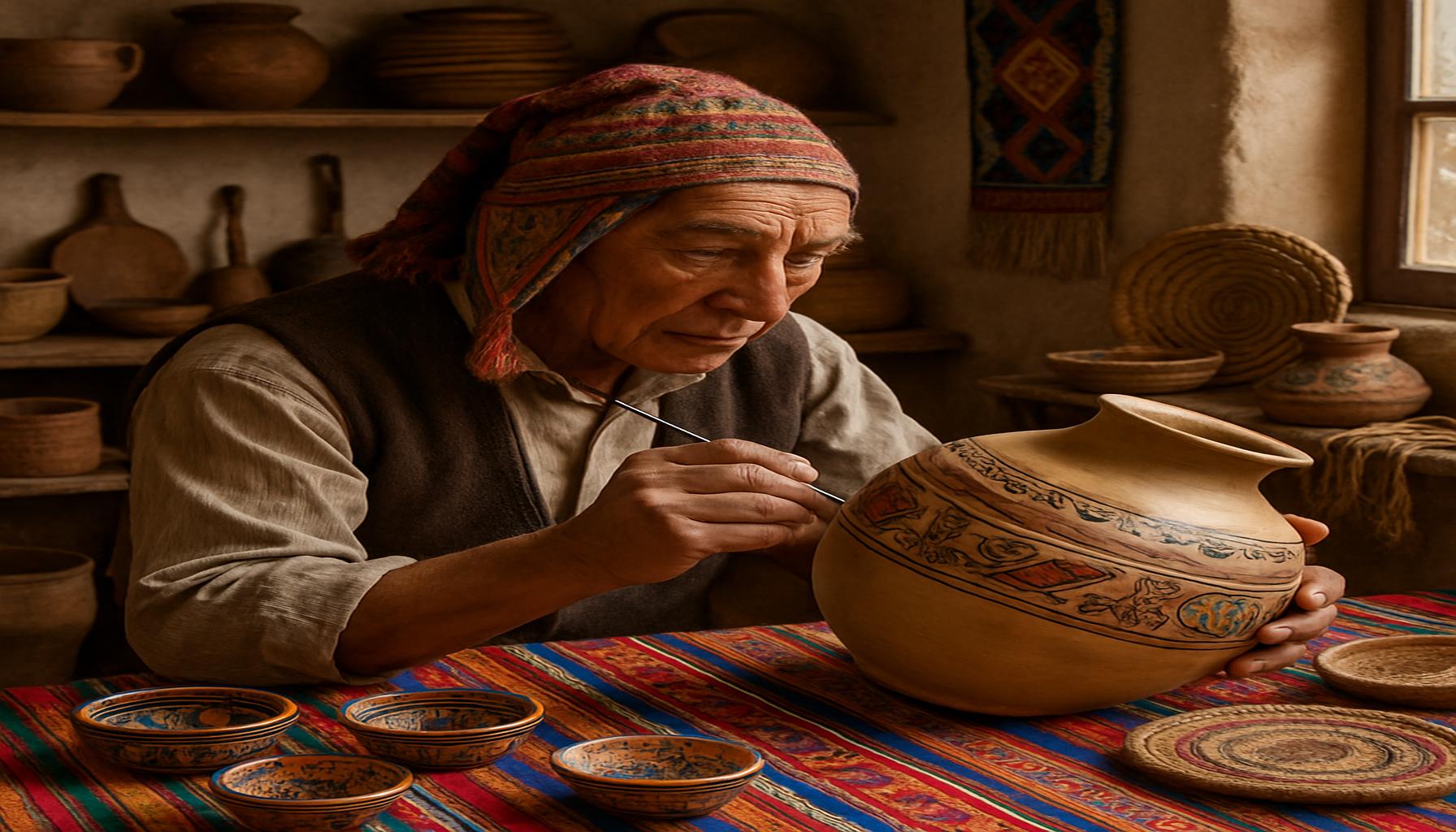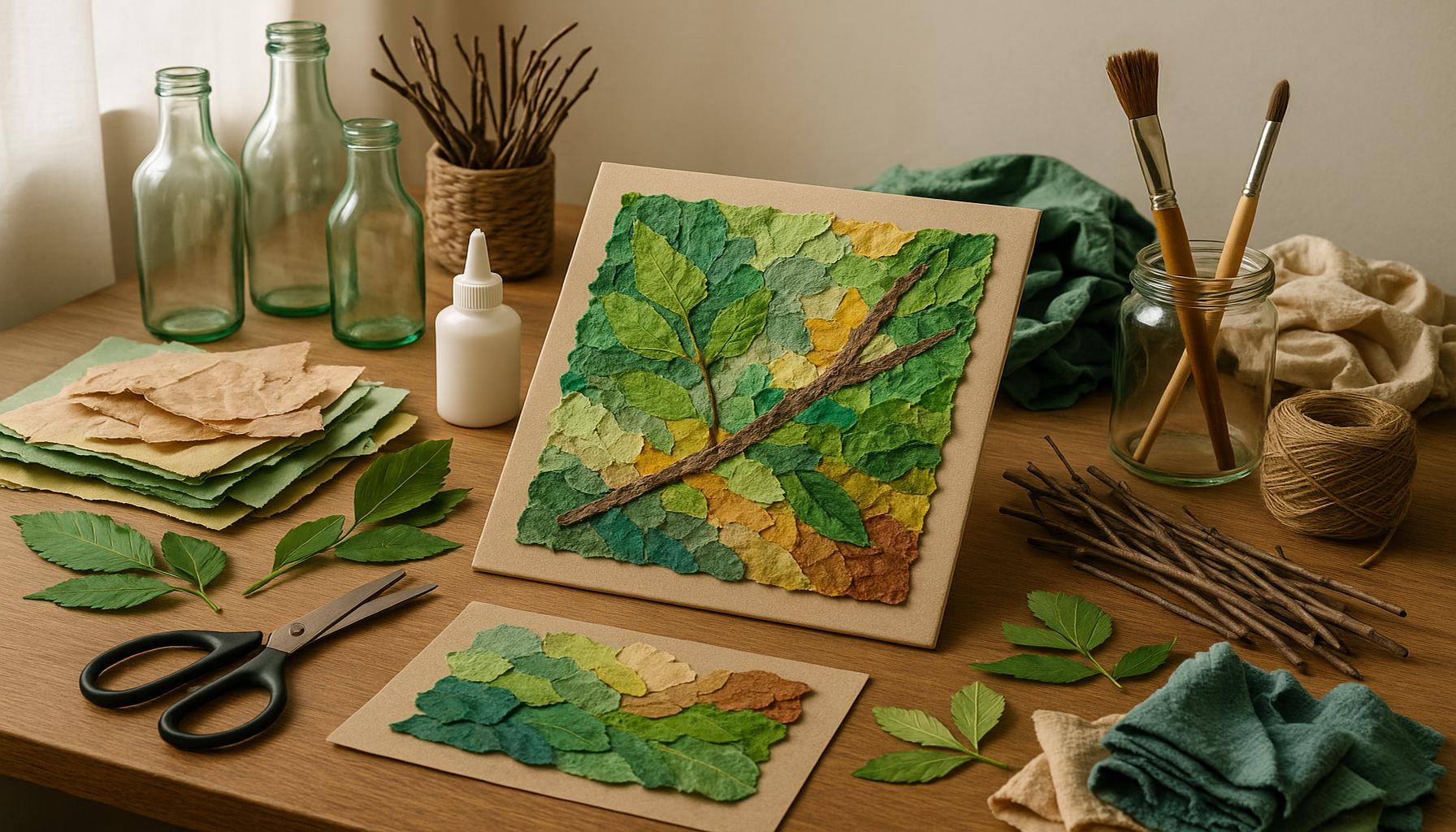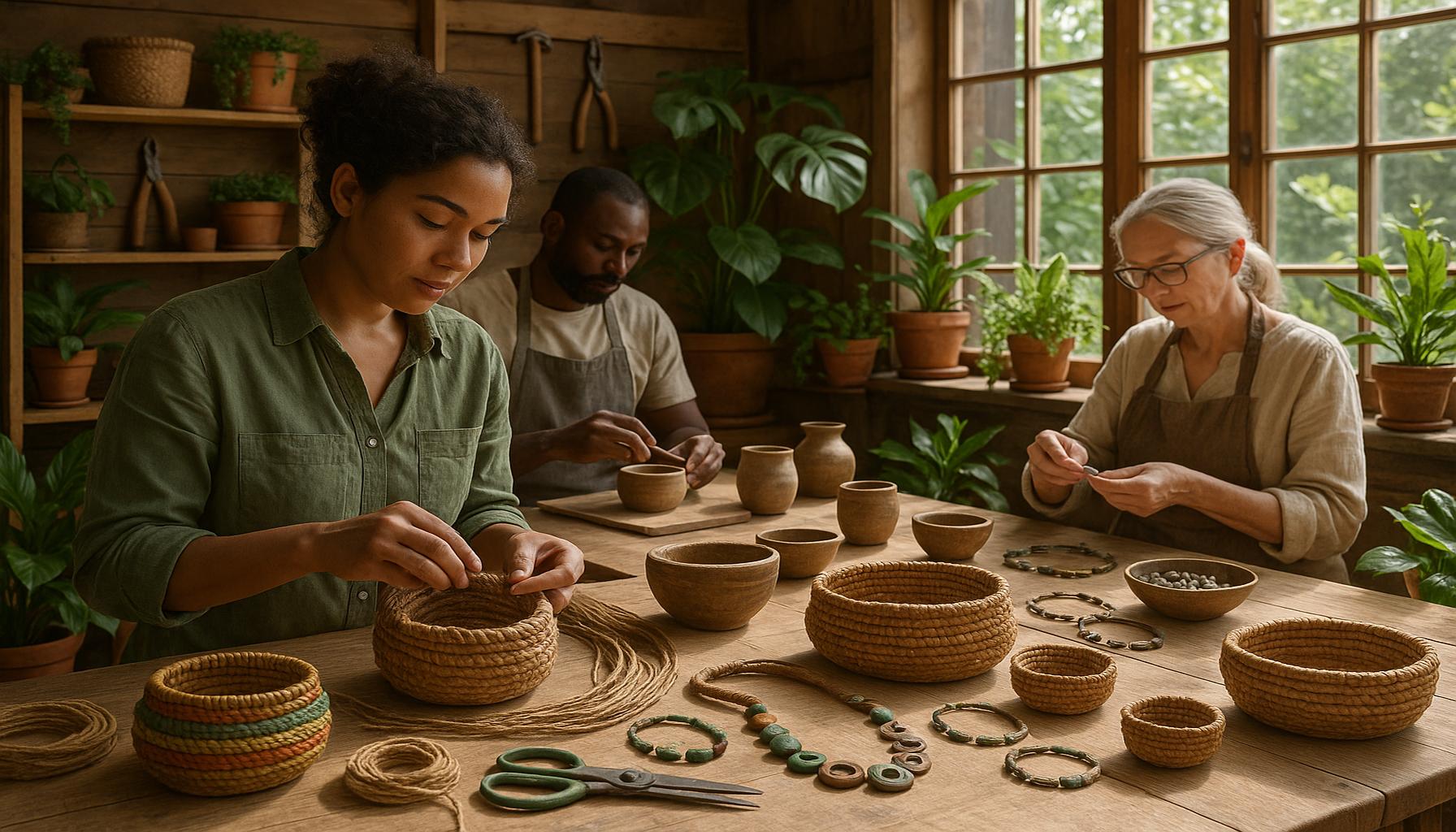The Evolution of Crafting: How Traditional Techniques Are Influencing Modern Design
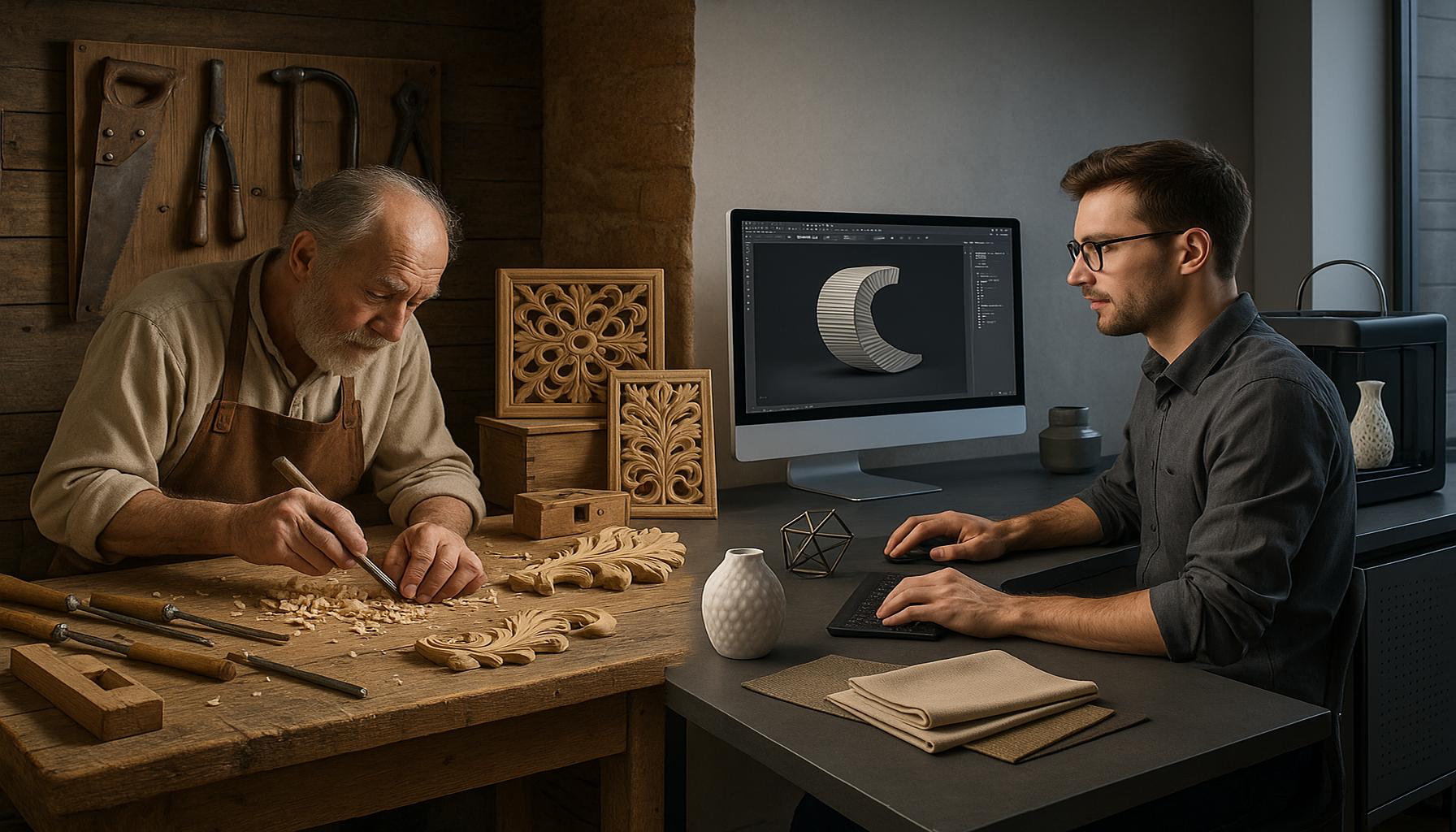
Shifting Landscape of Crafting
The transformation of crafting in recent decades is remarkable, shifting from utilitarian survival skills to vibrant forms of artistic expression. No longer relegated to a bygone era, these skills have found renewed meaning and purpose within the context of modern design. As artists and craft enthusiasts integrate traditional techniques into their work, a fascinating interplay between the past and present emerges, leading to a variety of contemporary trends that shape our creative surroundings.
Handmade Elements
One prominent trend is the growing appreciation for handmade elements. In a world inundated with mass-produced items, consumers increasingly seek uniqueness and character in their possessions. Artisans are responding to this demand by producing one-of-a-kind goods, from custom pottery to bespoke furniture. For example, local makers’ markets and online platforms like Etsy have gained popularity, offering consumers access to a plethora of handcrafted products. This shift not only supports small businesses but also fosters a deeper connection between the maker and the buyer, as stories of inspiration and creation accompany each item.
Sustainable Practices
Another significant development is the focus on sustainable practices. Craftspersons are now prioritizing eco-friendly materials and techniques rooted in ancestral knowledge. Many crafting circles are committed to using local, organic, or recycled materials, signaling a broader trend toward environmental consciousness. Techniques such as natural dyeing and upcycling outdated materials into new creations exemplify this ethos. This initiative is not just a response to environmental concerns; it also emphasizes a return to simpler, more meaningful practices that resonate with consumers eager to reduce their individual footprint.
Cultural Heritage
The re-emergence of cultural heritage in crafting is another noteworthy trend. Across the United States, various regions possess distinct crafting traditions that reflect their unique histories, communities, and identities. Traditional techniques such as Native American beadwork or Appalachian quilt-making are being celebrated and revitalized. Through workshops, exhibitions, and storytelling, the cultural importance of these practices is being highlighted, encouraging new generations to learn and appreciate them. This revival not only enriches our understanding of diverse cultures but also provides artisans with opportunities to share their narratives through the medium of their craftsmanship.
Hybrid Techniques
Lastly, the blending of hybrid techniques stands out as artists incorporate modern technology into traditional practices. For instance, the use of digital design software in textile creation or 3D printing in pottery adds a contemporary twist to established methods. By merging the old with the new, artists can explore uncharted territories of creativity while maintaining a connection to their crafting roots. This fusion is also evident in collaborative projects, where craftsmen and technologists come together to innovate and expand traditional boundaries.
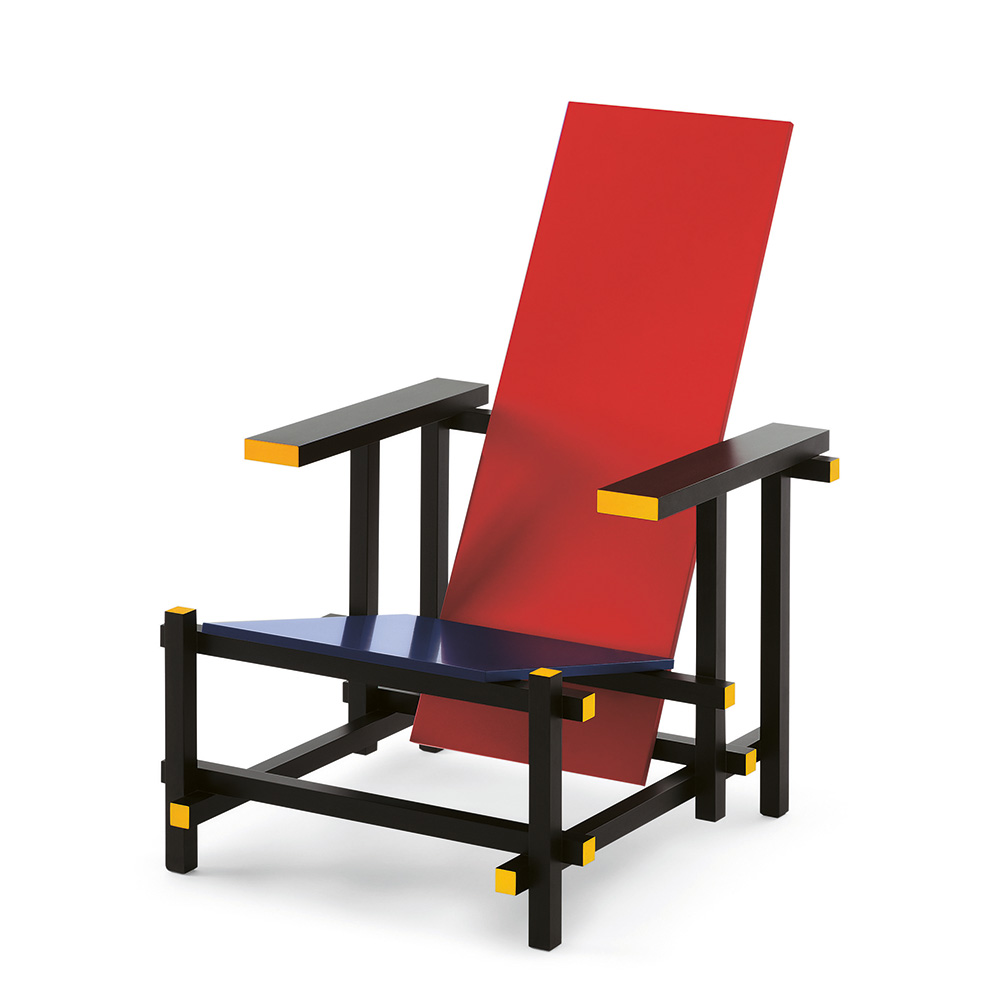
As we explore the impact of traditional crafting methods on modern design, it becomes increasingly clear how these age-old techniques are influencing the artistic landscape of today. By recognizing and embracing this evolution, we not only preserve cultural legacies but also pave the way for future creativity, making crafting a dynamic field that reflects our ever-changing values and preferences.
DIVE DEEPER: Click here to discover the art of photography
The Resurgence of Craftsmanship
In today’s consumer-driven society, the art of crafting has undergone a remarkable resurgence, today regarded as much more than a hobby. This revival of interest can be traced back to a collective yearning for a more personal and meaningful connection to the items in our lives. As contemporary design increasingly melds with traditional techniques, individuals are re-discovering the value of craftsmanship. This fusion not only cultivates an appreciation for handmade artistry but also enhances the aesthetic appeal of modern design.
Revival of Artisanal Skills
Across the United States, a new wave of artisans is dedicated to reviving traditional crafting skills. From pottery to woodworking, these makers are honing age-old techniques that have been passed down through generations. The focus on artisanal skills is evident in communities where individuals engage in hands-on workshops and classes that emphasize craft methodologies. Not only do these initiatives sustain the cultural heritage of crafting, but they also inspire an enthusiasm for learning that often sees new makers eager to delve into established practices.
The Allure of the Unique
The appeal of unique, individualized products cannot be understated. In contrast to the homogeneity of mass production, handmade items inherently carry stories and distinct character, factors that many consumers actively seek. This push for uniqueness is reshaping consumer behavior, leading to a trend in favor of items that represent personal taste rather than corporate branding. Within this context, consider the following factors driving the desire for unique handmade goods:
- Personalization: Custom pieces allow individuals to express their identities and commemorate personal milestones.
- Quality Assurance: Small-batch handcrafted products often boast superior quality and durability compared to mass-produced items.
- Connection to Maker: Buyers are increasingly drawn to the narrative behind the creation of a product, fostering a bond between the consumer and the maker.
The Impact of Technology
Interestingly, advancements in technology are playing a dual role in the evolution of crafting. While tradition remains at the forefront, modern techniques are being layered into the crafting process. For example, artisans are utilizing computer-aided design (CAD) to create prototypes, ensuring precision and efficiency while preserving the essence of handcrafting. Similarly, digital fabrication tools like laser cutters allow creators to experiment and refine their designs, merging the old with the new. This hybrid approach has opened doors for innovative creations that still respect the principles of traditional craftsmanship.
Community and Collaboration
A significant aspect of crafting today is the fostering of community. Makerspaces, craft fairs, and local artisan collectives are cropping up across the nation, creating venues for collaboration and shared learning. These spaces not only provide necessary tools and resources but also encourage the exchange of ideas and techniques. Such collaborative environments empower individuals to experiment, innovate, and celebrate the evolution of crafting while emphasizing a sense of shared cultural heritage.
As we delve deeper into the ways traditional crafting techniques are influencing modern design, it becomes evident that the landscape of creativity continues to evolve rapidly. This connection nourishes both the makers and those who appreciate their work, resulting in a rich tapestry of tradition and innovation that shapes contemporary design today.
| Category | Description |
|---|---|
| Heritage Techniques | Ancient methods that enhance modern aesthetics |
| Sustainability | Eco-friendly materials used in modern crafts inspired by tradition |
The connection between traditional crafting techniques and modern design is not merely nostalgic; it represents a rich tapestry of cultural heritage that continues to inform today’s aesthetic choices. For instance, techniques such as hand-weaving and pottery are being revived and adapted into contemporary styles, providing a unique fusion of past artistry with current trends. Moreover, the focus on sustainability in crafting is heavily influenced by traditional methods that emphasized local materials and resourcefulness. Craft artisans today are increasingly utilizing environmentally friendly practices, like dyeing textiles with natural pigments derived from plants, thus merging artistic expression with planetary care. This blend not only enriches the crafts but also appeals to a modern audience that values both style and sustainability. The journey from tradition to modernity creates a continuum where lessons learned from the past inform the designs of the future, embodying both respect for heritage and a vision for what lies ahead.
DISCOVER MORE: Click here to dive deeper
The Intersection of Sustainability and Crafting
As awareness grows around environmental issues, sustainability has emerged as a core value in both crafting and modern design. Makers are increasingly prioritizing eco-friendly practices, often opting for natural materials and time-tested, traditional methods that minimize waste and support a slower, more thoughtful approach to consumption. The melding of sustainability with crafting not only showcases the effectiveness of ancient techniques but also bolsters the relevance of these methods in contemporary society.
Embracing Eco-Friendly Materials
Many craftspeople are turning to local and sustainable materials to create their products. For instance, woodworkers are increasingly using reclaimed timber, while textile artists utilize organic cotton or hemp sourced from sustainable practices. This shift reflects a broader trend in modern design that emphasizes responsibility and a commitment to reducing environmental impact. As consumers become more eco-conscious, their demand for sustainably-crafted goods continues to influence the choices artisans make, leading to a surge in innovative, environmentally-friendly crafting.
Inspiration from Nature
A significant aspect of traditional crafting is its inherent connection to nature. Many artisans often look to natural forms, patterns, and colors for inspiration, leading to designs that resonate with organic aesthetics. This approach encourages consumers to appreciate the beauty of natural materials while creating a harmonious connection between the crafted items and the environment. Traditional techniques such as dyeing fabrics with natural plant-based materials or weaving baskets from natural fibers are gaining renewed interest, demonstrating how modern design can effectively draw upon the wisdom of the past.
Cross-Pollination of Disciplines
Modern crafting is also marked by an inspiring intersection of different artistic disciplines. For example, fashion designers are tapping into traditional textile techniques like indigo dyeing or weaving, merging them with contemporary aesthetics to create unique clothing lines that resonate with today’s audiences. This artistic fusion encourages a diversified approach to crafting and design and emphasizes the importance of collaboration among various art forms. Not only does this combination enrich the creative landscape, but it also enhances the overall user experience by integrating style, function, and tradition.
The Role of Social Media
In the digital age, social media platforms have played a pivotal role in the resurgence of traditional crafting. By providing a space for artisans to showcase their work, platforms such as Instagram and Pinterest allow makers to reach a global audience. This exposure has created an ecosystem where traditional techniques can gain traction, inspire new designs, and foster community engagement among craftsmen and consumers alike. Hashtags like #handmade and #artisan help amplify the conversation around handmade goods, allowing buyers to connect directly with makers and their stories.
Revitalization of Local Economies
Finally, traditional crafting techniques contribute to the revitalization of local economies, particularly in rural areas. Following the principles of fair trade, many artisans are establishing small businesses that empower their communities. Through the promotion of handcrafted goods, artisans are able to compete with mass-produced items while sustaining their local heritage. Community-driven initiatives, such as farmer’s markets and artisan markets, encourage consumers to support local creators, reinforcing the importance of traditional craftsmanship in driving economic growth and community solidarity.
EXPLORE MORE: Click here to discover your unique writing voice
Conclusion: Crafting a Sustainable Future
In summary, the evolution of crafting demonstrates a profound dialogue between traditional techniques and modern design, revealing how age-old practices can inform and enhance current creative endeavors. As makers increasingly prioritize sustainability, they not only preserve the essence of craftsmanship but also breathe new life into it, forging a path toward more responsible consumption. By integrating natural materials, engaging with local economies, and emphasizing eco-friendly practices, artisans are efficiently marrying tradition with innovation.
Furthermore, the exploration of inspiration from nature and the cross-pollination of artistic disciplines foster a rich tapestry of creativity that resonates with a diverse audience. This convergence magnifies the value of traditional techniques, showcasing their versatility and relevance in today’s design landscape. Moreover, platforms like social media have acted as catalysts, connecting craftspeople with global consumers, thus broadening the appreciation for handcrafted goods and their stories.
Ultimately, as modern design continues to evolve, it becomes increasingly clear that the wisdom of traditional crafting is not merely a relic of the past but a vital contributor to the future of design. This ongoing fusion encourages us to embrace a mindset that values originality, sustainability, and community—elements essential for cultivating a deeper connection between creators and consumers. For those eager to explore this dynamic interplay, the world of traditional crafting offers invaluable insights and inspiring possibilities that are worth investigating further.
